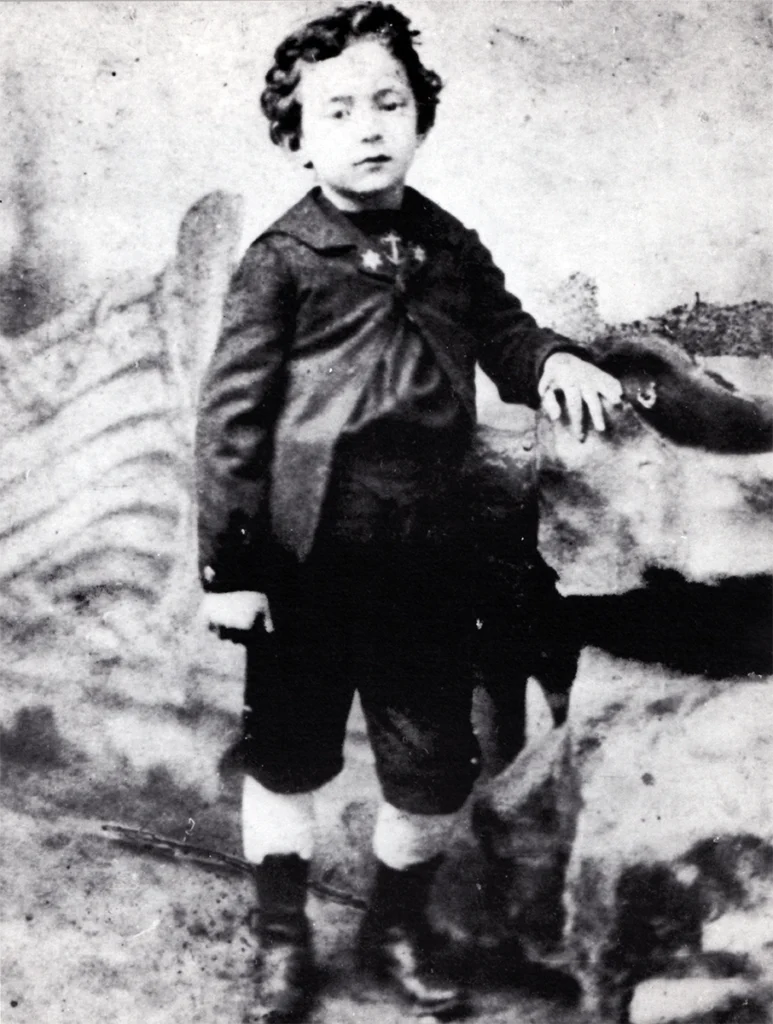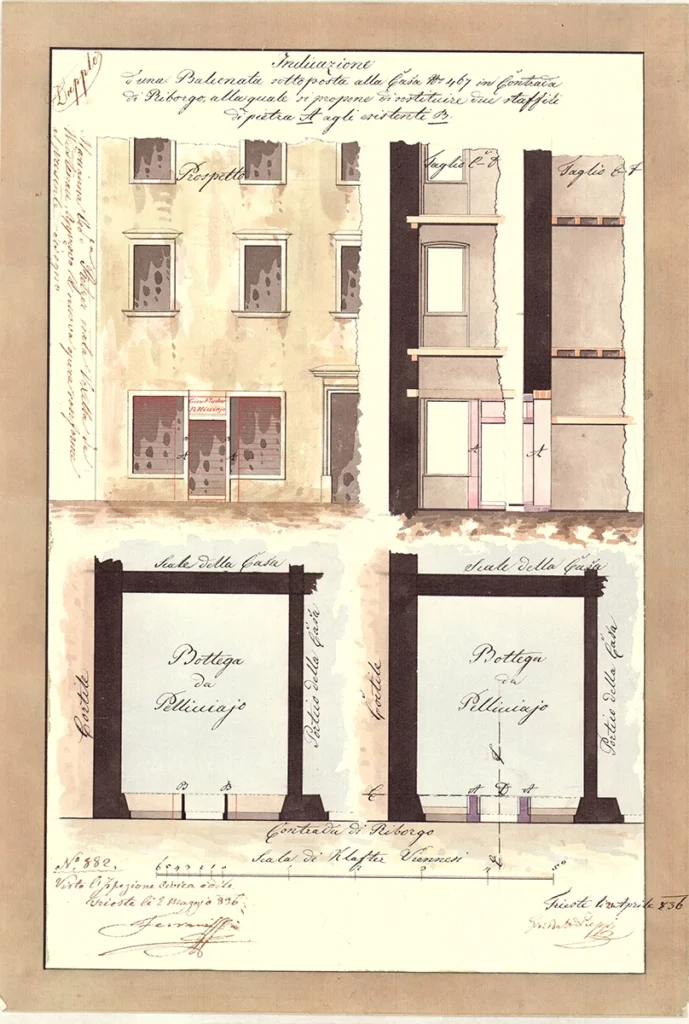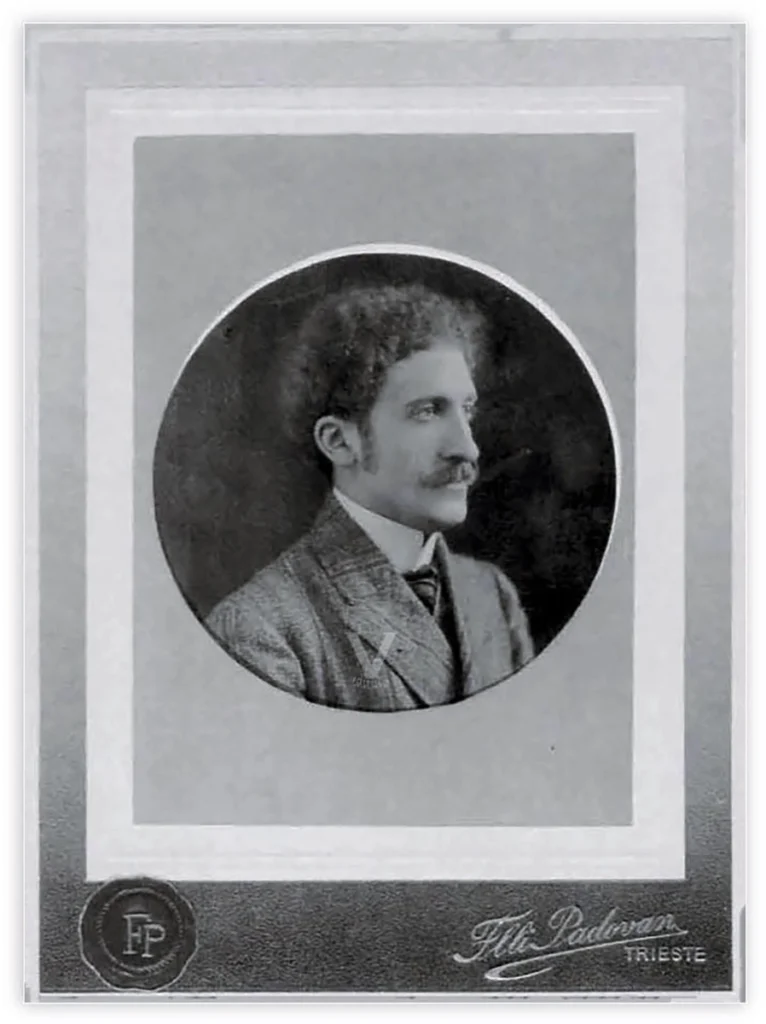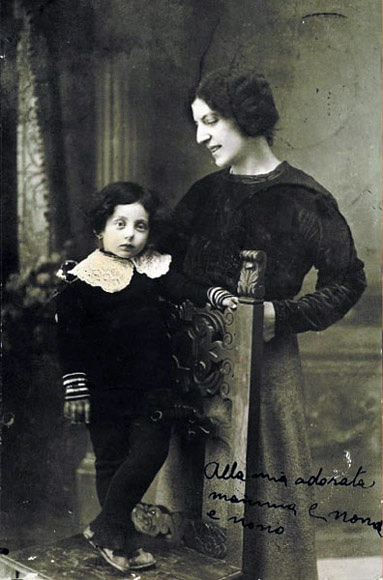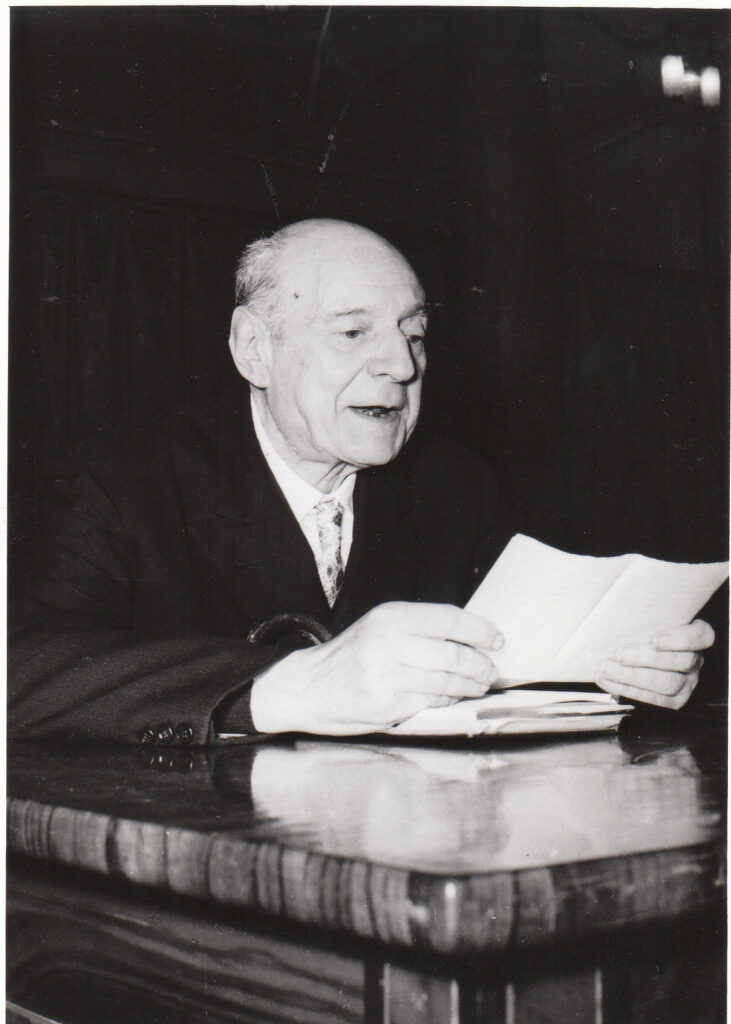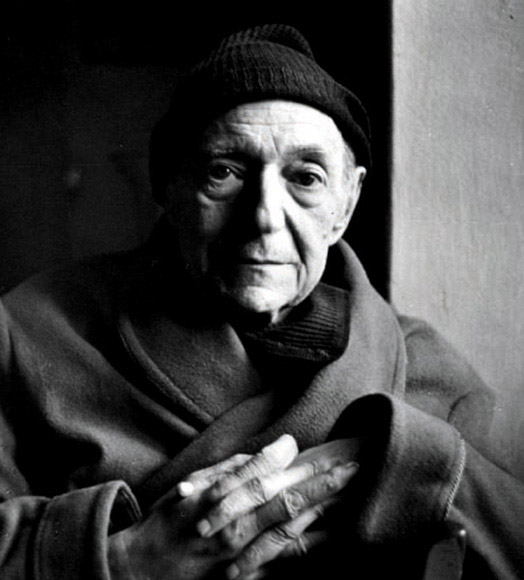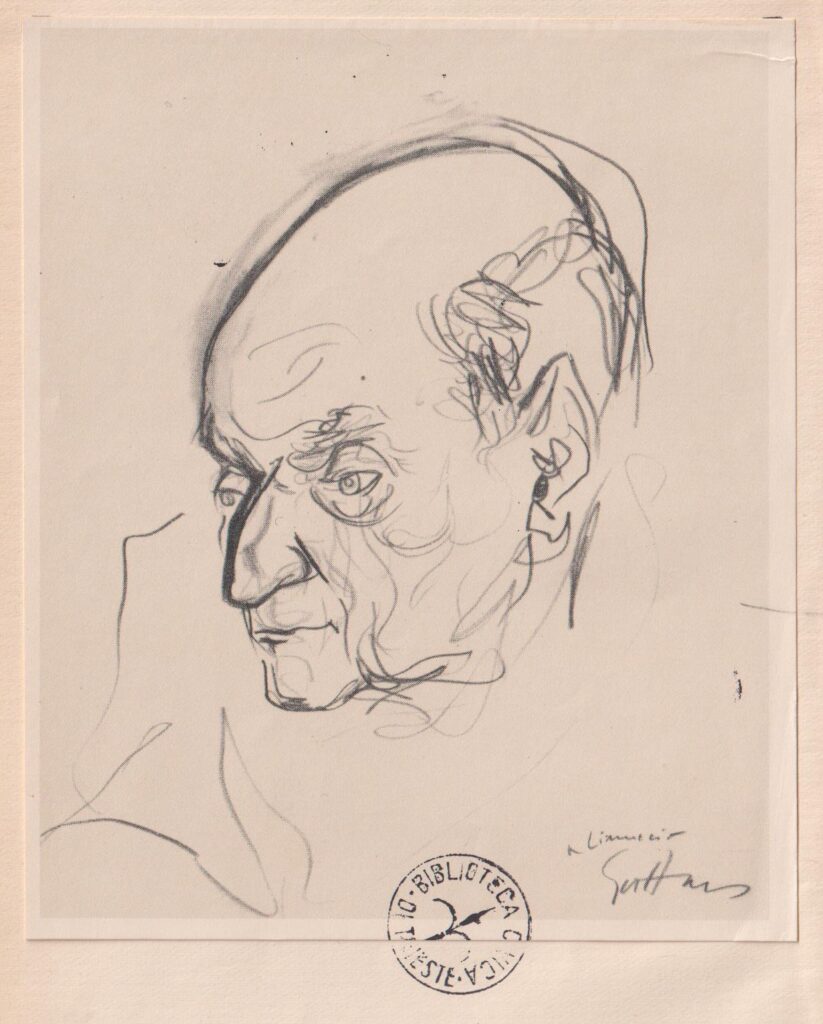Uno scorcio di via di Riborgo negli anni Venti del Novecento.
1883
1906
Little Berto
Above: A view of Via di Riborgo in the 1920s. He wrote of himself in Storia e cronistoria del Canzoniere: “Saba is a concrete artist: his poetry willingly ties itself to places and dates” and includes the ghetto, a place of childhood to which, however, Saba – who, moreover, does not know Hebrew – feels he does not entirely belong.
1903
1911
What remains for the poet to do
In 1903 in Pisa, where he had moved, he suffered his first serious attack of “neurasthenia” which no longer allowed him to “sleep, think or love”. After a trip to Montenegro, he stopped off for two years in Florence and on one of his periodic returns to Trieste he met (Caro)Lina Wölfler, whom he married in 1909.
In 1910 their daughter Linuccia was born and his first collection of poems (“Poesie”) was published, with an introduction by Silvio Benco and signed with a new pseudonym: Umberto Saba. This was followed by Coi mie occhi (“With My Own Eyes”) published for a fee by the “Voce”, a newspaper which, however, on the opinion of Scipio Slataper, rejected the essay-manifesto Quello che resta da fare ai poeti (“What remains for the poets to do”) which was published posthumously, in 1959, by Anita Pittoni’s Zibaldone publishing house.
Saba met his future wife Lina in 1904 through his friend Giorgio Fano, who was engaged to Lina’s sister. The two only met again between 1907 and 1908, when Lina lived at 28 (today 24) Via Domenico Rossetti. Saba, who knew the street but not the number, walked there in the hope of meeting her and she appeared at her window, intent on watering her geraniums. “[…] the street of joy and love | is always Via Domenico Rossetti”, Tre vie (1910-1912)
Linuccia Saba. > coll. MSa – Archivio fotografico
The dark cave of the canzoniere
1912
1921
The dramatic marital crisis recounted in the Nuovi versi alla Lina (“New Verses For Lina”) took Saba to Bologna and then to Milan where the war overtook them. Saba was recalled by the Italian army and assigned to duties in the rear. At the end of the conflict he purchased Giuseppe Mayländer’s bookshop, the Libreria Antica e Moderna which at first appeared to him as a “black, fatal cave” and subsequently, having become the Libreria Antiquaria Umberto Saba with its logo designed by Virgilio Giotti, became his pride and refuge, his artist’s workshop and the publishing house for his poetry, starting from the first edition of the Canzoniere which came out in 1921.
Handwritten postcard with old antiquarian bookshop stamp to Aldo Fortuna
Postcard
Handwritten postcard with old antiquarian bookshop stamp[Trieste, 19th July 1921].Dear Aldo. – In Sept.[ember] you will (...) OPEN
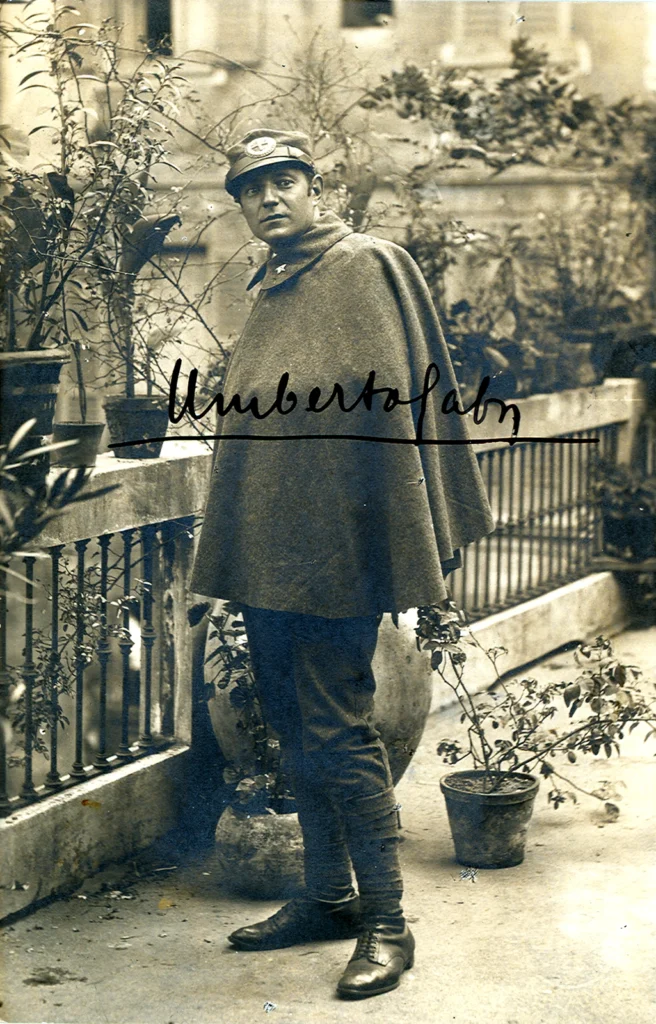
1922
1930
The years of psychoanalysis
The years that followed were a productive period for Saba, dominated by his passion for music: Preludio e canzonette (“Prelude and Ditties”), Autobiografia (“Autobiography”), Figure e canti (“Figures and Songs”) and Preludio e fughe (“Prelude and Fugues”). In 1928 the magazine “Solaria” dedicated an issue to him as it did, only a year later, for the late Italo Svevo whom Saba spent time with and admired, describing him as “a born storyteller”. At that time he also established links with Debenedetti, Montale, Comisso and other writers, both established authors and ones just setting out on their careers (Penna, Quarantotti Gambini). His discovery of psychoanalysis and therapy with Edoardo Weiss also took place at this time, which led him to write the verses of the collection “Il piccolo Berto” (“The Little (Um)Berto”).
Umberto Saba and Italo Svevo
Postcard
Umberto Saba, Epigrafe di Italo Svevo (“Epigraph of Italo Svevo”)typescript with handwritten signature, [undated]The text was (...) OPEN
![La copertina dell’edizione Einaudi del 1945 del Canzoniere su cui campeggia un violino, ultima traccia del sogno giovanile di Saba diventare concertista. «Nemmeno questa volta però il violino gli portò fortuna; la copertina aveva tendenza a staccarsi […] tanto che quanto rimaneva dell’edizione fu dovuto mandare in legatoria e il Canzoniere essere venduto rilegato» (Storia e cronistoria del Canzoniere). > coll. BC Hortis](https://lets.trieste.it/wp-content/uploads/2024/08/03_Canzoniere_Einaudi_violino.jpg)
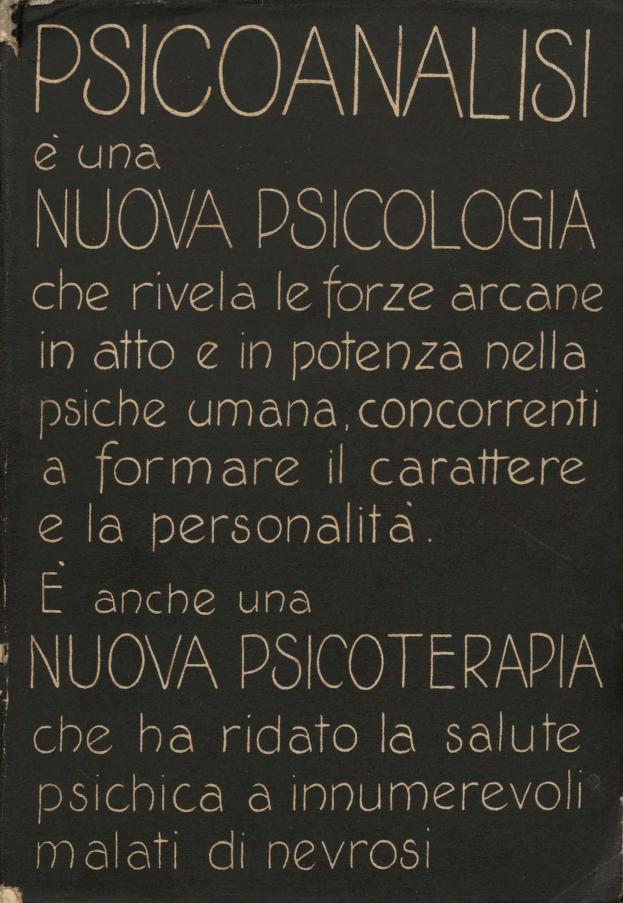

1931
1948
Living from prose
The 1930s were linked to the growing concern, which became fear and anguish, for the rising tide of antisemitism that led to the racial laws, proclaimed by Mussolini while in Trieste in 1938. Saba was forced to fictitiously hand over the bookshop to his clerk, “Carletto” and, after the 8th September 1943, when Trieste became part of the territory directly under Nazi control, with the help of Carlo Levi and Montale he took refuge in Florence and then in Rome. There he received the first copy of the new edition of Canzoniere published by Einaudi in October 1945 amidst a thousand difficulties. The poet, however, was dissatisfied and immediately began correcting some verses.
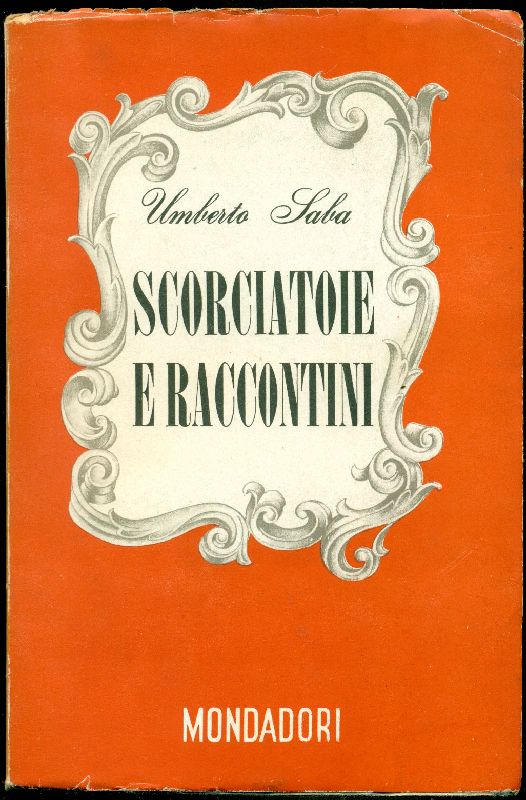
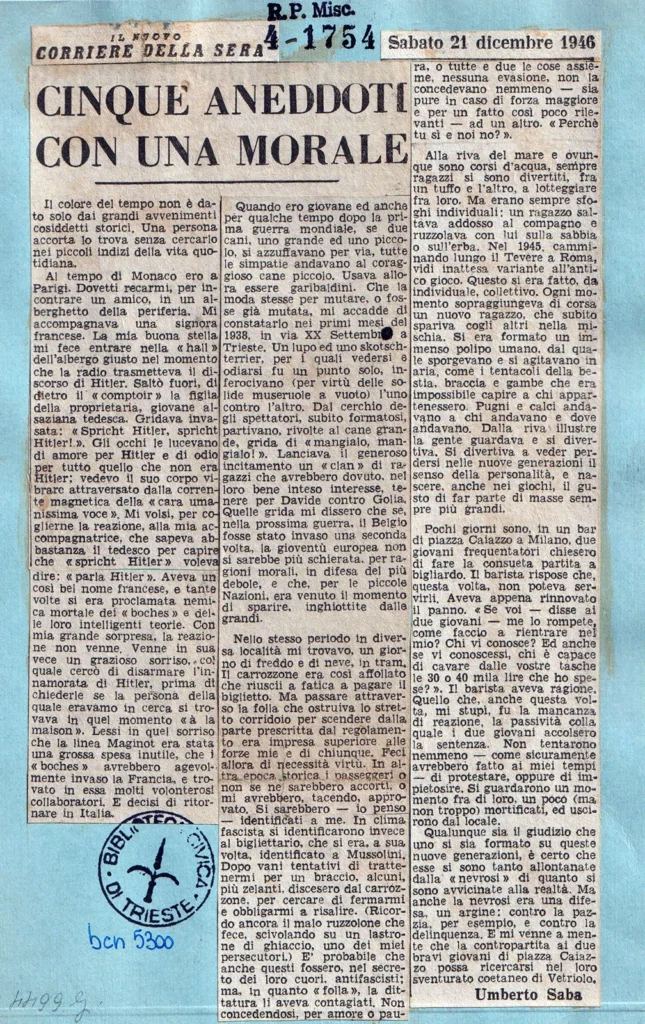
This Aneddoti were supposed to be part of a book of autobiographical short stories Le schegge del “mondo meraviglioso” (“Splinters of the wonderful world”, never released) together with other ‘food’ articles sent by Saba to newspapers to earn some money. They are often snapshots in which the poet fixes Trieste in the ‘colour of time’, which turns from blue to black and red, the poles of political and nationalistic opposition
“A pair of well-made gloves”
Postcard
Anita Pittoni, paper model, 1946In the winter of 1946, Anita Pittoni designed and knitted a pair (...) OPEN
![Saba sorride accanto alla figlia Linuccia che ricorda: «In quel giorno che temeva e desiderava ad un tempo […] , si sentì baciato dalla gloria e lesse il suo discorso, così poetico e bello […] con tanta gioia nel cuore che ne era trasfigurato» (U. Saba, Prose, Milano, 1964).> coll. BC Hortis](https://lets.trieste.it/wp-content/uploads/2024/08/07_2_laurea_Saba_Linuccia_Roma_1953_laureaHonorisCausa.png)
1948
1957
Epigraph
From Milan, his new refuge, Saba looked with desperation towards Trieste: “it will become – like the Palestine in ruins – one of the hells of the world”, he wrote to his daughter – and in the columns of “Corriere della Sera” he half-seriously applied for Governorship of the Free Territory of Trieste. Public recognition – which culminated in the awarding of an honorary degree from the La Sapienza University – was not enough to alleviate the growing mental anguish of the poet who resorted to opium and was admitted ever more frequently to a clinic . He left the one in Gorizia where he died on 25th August 1957 for the last time nine months earlier, to attend the funeral of his beloved wife, Lina.
Epigrafe is Saba’s bitter poetic farewell, summarised in the lapidary final lines of the collection:
“I spoke alive to a people of the dead. Dead to them I refuse and ask for oblivion”.
At the “Caffè del Municipio”
Postcard
Letter from Umberto Saba to Dionisio Romanellis, Bologna, 22nd October 1912In this letter – written on (...) OPEN
Saba and the Trieste Civic Library
Postcard
Umberto Saba, Della biblioteca civica ovvero della gloria, (“The Civic Library, or the Glory”), Milano, Henry (...) OPEN


